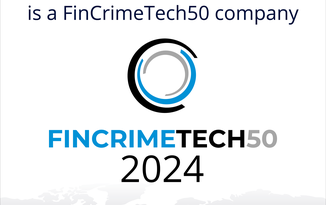Managing Risk during Economic Harship
The latest data from the global bank Goldman Sachs tips the UK economy to enter a deeper recession in 2023 than many forecasters previously expected. Claiming that interest rates are likely to fall, the UK economy may shrink up to 1%.
15 years on from the UK’s last recession in 2008, technology has advanced far beyond expectations with the online space for cyber criminals creating a number of opportunities to commit a flurry of financial frauds. It's safe to say that financial services has seen its fair share of financial crime in that time. In 2021 alone, digital fraud accounted for $385 billion in losses for the banking and payments industry worldwide.
With the economy worsening, the world of finance and all the sectors that keep the wheel churning face the real challenge of strengthening their digital defences to reduce heavy losses from fraud.
So, how can business effectively prepare for this?
Risk Management Policy: Technology must be at the helm of any risk department
Leaders within the financial sector and within specific businesses must be extremely technologically aware and open to strengthening their company's protection with new technology-led anti-fraud products. Functions across the business must be dynamic and allow for new layers of protection to be implemented.
The truth is that fraud and risk teams in the financial sector will need to focus on data to get ahead of fraud agents. Data tells the story. The problem is that data is usually disparate, and in need of unifying to create an optimal workflow to achieve operational efficiency.
There is financial risk management software for lenders, banks & mortgage advisors. Fraud Finder is one of those tools and can easily retrieve, compare and analyse a number of data points, stress test them for fraud and turn them into actionable financial insights.
From a few documents, Fraud Finder utilises data enrichment functionality and fraud tech to authenticate documents and build an accurate financial profile of any applicant. All the data is in one risk report and the decision engine takes minutes to complete a range of fraud checks, not hours.
Multiple risk mitigation touch points in place
Having multiple defences in place is the best foundation for a successful and agile risk management strategy.
With fraud riding the wave of technological advancement, companies will require a tech-first, multiple-touchpoint approach to mitigating fraud.
A fraud risk assessment questionnaire conducted by Insurance Post showed that the Cost of Living Crisis currently plaguing the UK is expected to give way to a rise in fraudulent claims across all industries.
Below, the publication show respondents are concerned about a number of areas in their business flow where fraud protection is most and least successful.

Credit: Insurance Post
There is significant opportunity for risk management technology to be deployed here for extra protection.
The survey goes on to convey that application fraud is one of the most concerning, and costly, types of fraud that is leading to insurance companies losing money. No application is complete without documents. All documents can be tested and their data enriched for risk management. People want quick access to cash during a cost of living crisis and will modify documents to get it. Application fraud is a risky business.

Having reliance on a range of varied yet unified protection methods allows for enhanced decision-making and fraud detection.
Comfortability is an enemy to all and particularly risk managers who may tend to unintentionally fall into the trap of only solving problems they are aware of rather than searching for the new issues arising.
Risk managers have the responsibility to consistently reassess new risks posed to their businesses, and accelerate strategies and tools when threats of fraud are naturally higher, like in times of economic hardship.
Ultimately, all teams of the business, IT, Operations, Fraud & Risk, must be unified in their training and attitude to cyber risk whilst working with a technology-led business flow that minimises manual work and utilises data to keep unnecessary costs and fraud loss to a minimum.
Read next:
A run-down of the fraud caught for Homeppl clients with anti-fraud technology in September 2022
The Top Ways Mortgage Lenders Verify Bank Statements
Application fraud in insurance: a growing issue during the cost of living crisis
How KYC Assessments can be enhanced with Document Verification





